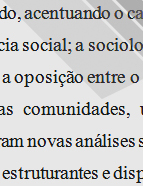

................................
Between 1788 and 1794, some members of the ARCL began to visit registries and make inventories of the documentary collections, with João Pedro Ribeiro’s report On the current state of the registries of the Kingdom and the need to take appropriate measures to prevent their total ruin (1798) being particularly noteworthy. He was therefore appointed professor of Diplomatics at the University of Coimbra, a subject that was later transferred to the Torre do Tombo (1801), later the National Archives (Regulation of 1823), with the mission of incorporating the collections of institutions that had been abolished during the revolution. The growth of documentation and the need for access to it led to the development of descriptive tools and archival installation techniques, creating a totally new functional configuration compared to the old administrative archive of the Crown. Subsequent regulations (1839, 1862) improved the quality of the incorporation processes and the preparation of consultation indexes, although public access to the documentation only began in the early 20th century (1911). Undoubtedly, at the organisational level, the ARCL was the body that integrated this institutional history, as evidenced in the collection of memoirs, the awarding of research prizes, the enhancement of the archive and library, the production and dissemination of legislative, legal and regulatory sources, and the publication of repertoires and unpublished works (Joaquim Veríssimo Serrão , A Historiografia Portuguesa ...Lisbon, 1972-74).
This activity necessarily required training in diplomatics, numismatics, bibliology and palaeography , eventually leading to the creation of “a higher education course called bibliothecario-archivista ” (1887), as well as the General Inspection of Public Libraries and Archives. At the beginning of the 20th century, with the republican ideals on education and culture, “the services of the National Libraries and Archives” were reorganised (1911) and spread throughout the country, as is the case, for example, of the district archives (1916, Leiria, Bragança and Évora; 1917, Braga; 1918, Lisbon and Santarém; 1931, Porto, Coimbra, Guimarães, Funchal, Ponta Delgada; 1932, Viseu; 1933, Portalegre ; 1948, Angra do Heroísmo ; 1965, Aveiro, Castelo Branco, Faro, Beja, Guarda, Horta, Santarém, Setúbal, Viana do Castelo, Vila Real) and also from ‘institutional’ archives such as the University of Coimbra (also a district archive since 1927), Military Historical Archive (1911), Historical Archive of the Ministry of Public Works (1852), Historical Archive of the Ministry of Foreign Affairs (1921), Overseas Historical Archive (1931), Historical Archive of the Ministry of Finance (1937) and many municipal archives. The same would happen to the training of historians with the Higher Course in Arts (1858-1911) and the emergence of the Faculties of Arts (1911).
This work is financed by national funds through FCT - Foundation for Science and Technology, I.P, in the scope of the projects UIDB/04311/2020 and UIDP/04311/2020.
